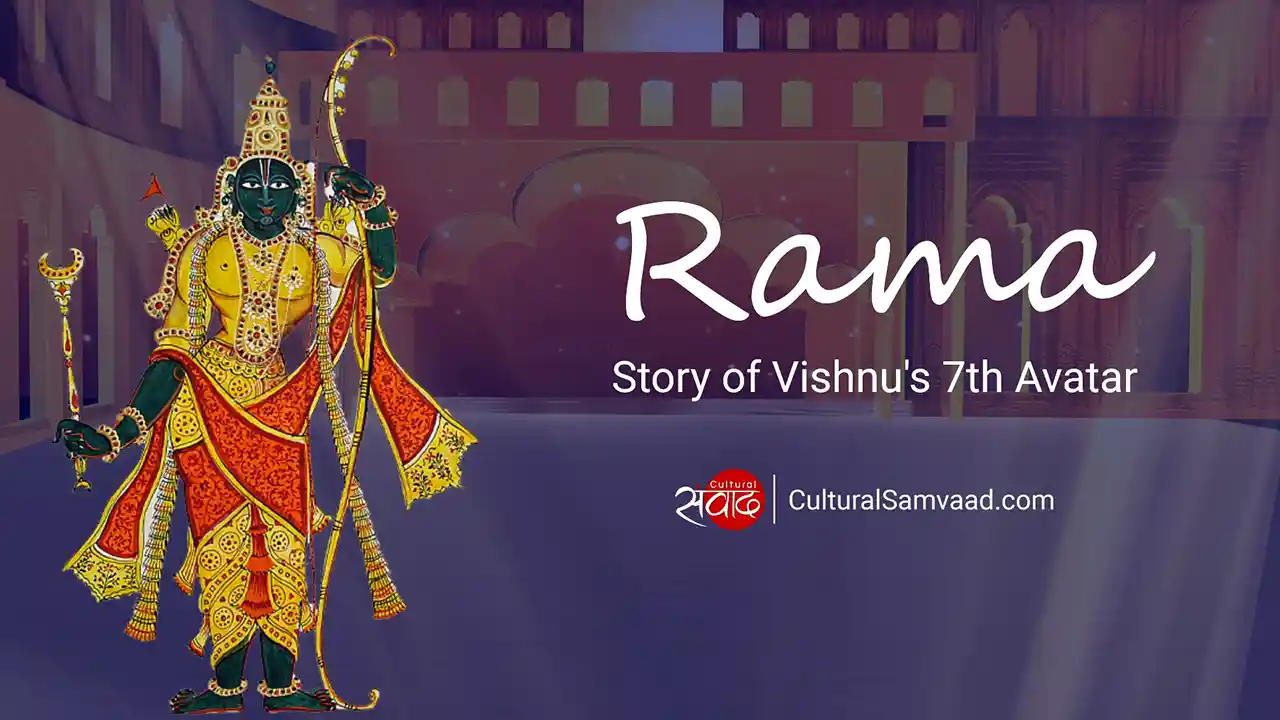 One of the four Vedas, Sāmaveda has a unique distinction. It not only provides rituals for worship like the Yajurveda, but is specifically meant to set to music or melody particular verses from the Vedic pantheon. This is also evident from the name Sāmaveda, which can be translated as the saṃhitā containing ‘the knowledge of the melodies’.
One of the four Vedas, Sāmaveda has a unique distinction. It not only provides rituals for worship like the Yajurveda, but is specifically meant to set to music or melody particular verses from the Vedic pantheon. This is also evident from the name Sāmaveda, which can be translated as the saṃhitā containing ‘the knowledge of the melodies’.
The Sāmaveda is one of the smallest vedas and has approximately 1810 stanzas. This number is further reduced to only about 1549 stanzas when the repeated verses are taken away from the total count. All but 75 of these verses have been taken from the Rigveda. These 75 verses may be found in other recensions and saṃhitās. The verses of the Sāmaveda are completely rearranged with absolutely no connection to their original order in the Rigveda. They are mainly put together in the sequence in which they were to be employed in the ceremonies.
The Sāmaveda saṃhitā has two divisions- the Pūrvārcika and the Uttarārcika. The names indicate their origin from the Rigveda. The word ārcika comes from the root – ‘ṛc’, which is nothing but a Rigvedic verse. The word ārcika means, ‘collection of ṛc stanzas’. However, the ṛc were chanted whereas, the Sāmavedic verses are sung and therefore referred to as sāmans.
The Sāmaveda is an important text for the students of Indian music, particularly for those who are also interested in the study of history of Indian Music. It is of significance to understand the roots and the beginnings of what we term as melodious sound, in the Indian context. The vedic scriptures are the earliest reference points for the existence and arrangement of music.
Purpose of the Sāmaveda
The verses of this Veda were specifically sung at the offering of the Soma libation (refers to offerings of liquid substances in a sacrifice). The Udgātar (the Sāmavedic priest) sang these metrical verses at the performance of the Somayāga in which the juice of the soma plant was extracted, sieved and then mixed with milk and other ingredients and offered to various deities. The meaning of the verses was of little interest to the Sāmavedins. Melody was the all important aspect of their role in the yajña. The priest who trained in this tradition to become an udgātar had to first learn the melodies (sāman).
Structure
The first book, Pūrvārcika consists of 585 single stanzas which like the Rigveda follow one after the other, partly according to the metre and partly according to the sequence of the deity (Agni, Indra, Soma). These stanzas are sung to about double the number of different tunes.
The second book consists of 1225 stanzas which are arranged and sung according to the order of the principal sacrifices. These stanzas are all sung to the same tune which the Pūrvārcika has taught. The Uttarārcika is therefore, a song book in which the complete text of the songs is given, while the melodies are assumed to be already known.
Four gānas (book of songs) which give the tunes for the verses are also a part of the Sāmaveda. The melodies are designated by means of musical notes and the texts are drawn up in the form which they take in singing.
- The Grāmageyagāna, the songs to be sung in the village, are a part of the Pūrvārcika. These were considered auspicious and were for public recitation.
- The second book of songs called the Āraṇyagāna is also a part of the Pūrvārcika. It was supposed to be dangerous due to its mysterious and mystic nature and was to be practiced only in the forests.
- The two other gānas, the Ūhagāna and the Ūhyagāna, belong to the Uttarārcika. The Ūhagāna was connected to the Grāmageyagāna and the Ūhyagāna to the Āraṇyagāna.
Simply put, the Pūrvārcika stotras were sung to melodies described in the Grāmageyagāna book.
Presently, three schools of Sāmaveda are known. As mentioned earlier, the Sāmaveda throws light on the beginnings of Indian music. The surviving literature is quite detailed as the saṃhitā is based on performance. The seven svarās can be traced to the vedas in general and the Sāmaveda in particular. One can presume that the sounds of the Āraṇyagāna may have developed into what we consider as folk or traditional music and the sounds of Grāmageyagāna would have developed into more complex patterns giving us what we understand as Indian Classical.[i] Thus, the music that we enjoy today having a typically Indian sound is a living tradition and is the legacy of the Sāmaveda.
Recommended Reading:
- Gonda, Jan. A History of Indian Literature Vol I (Vedic Literature),Wiesbaden, Otto Harrassowitz,1975.
- Winternitz, M. A History Of Indian Literature Vol I, Calcutta, University Of Calcutta, 1927.
- Hymns Of The Sāmaveda, Tr. R.T.H.Griffith, 1895.
- Satavalekar, S.D. Sāmaveda ka Subodh Bhashya, Pardi, Svadhyaya Mandal, 1985.
- Translation Of The Samhita Of The Sāmaveda, Rev.J.Stevenson, Calcutta, Society For The Resuscitation Of Indian Literature, 1906.
[i] This is the author’s conjecture and is to be treated as such.






Add comment